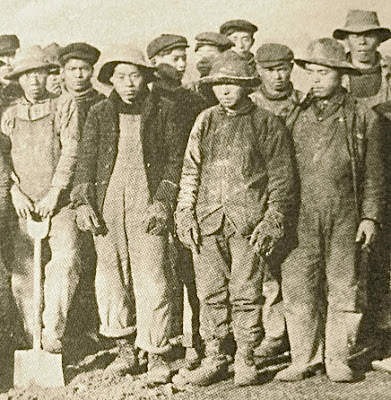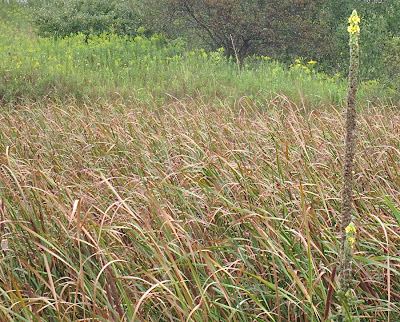WHERE ARE YOU, GRACIE PURVIS?
Chapter 1 - Are some stories better left untold?
I consider myself a fortunate man. My father liked to write things down.
In 1975 he wrote his Naval memoirs (35 hand-written pages that covered the years 1941 - 1945), in the mid-1990s he wrote in more detail about a couple of well-remembered Navy adventures for books that are still considered significant today, and while he lived in the village of Norwich, Ontario he penned weekly columns for a few years that touched on various aspects of his life and surroundings.
He also left behind, after his death in 2003, many invaluable photographs and artifacts related to his Navy days, and would have left behind many more had he not lost, by theft, an important collection of souvenirs from a Navy warehouse in Egypt, about the time of D-Day in Sicily, 1943.
About the unfortunate event my father writes the following:
“Late June, 1943 was the last time I helped move that huge mound of baggage. We were in Dejehli, Egypt and we stowed them in a wonderfully clean army building there. I put a navy padlock on the door (I’m kingpin now), the baggage party walked to a waiting truck and none of us ever saw our gear again. Our clothing, photos, souvenirs, everything we owned, went missing.” (pg. 88, “DAD, WELL DONE”)
I can endure the loss of most of father’s authentic WW2 relics, including a piece of shrapnel taken from the deck of the oil tanker Ennerdale shortly after it was attacked at sea south of Milford Haven, Wales, June 22, 1942.
[Dad writes, “We (Ennerdale) arrived at Cove (sic) the next
day with everyone happy to be alive.” I say he landed at
Because after having conversations with other children of WW2 veterans who have in hand or memory very few, if any, wartime stories, photographs or artifacts, I consider myself (and my four siblings) very fortunate indeed.
And because father wrote things down I’ve been able to get to know him better, draw a little closer to him, even though he has been gone for almost ten years. Some stories reveal he and I are more alike than I would have known or even admitted a few years ago.
That being said, and though some stories make me laugh and say to myself, “Of course, Dad, what else would a seaman do with several crates of officers’ rum? I bet would have done the same,” or wonder how he made it home alive, or encourage me to look for more background information about where he was at a particular time (e,g., Cowes, not Cove), or inspire me to applaud his actions, others raise questions and concerns and take me into challenging, sometimes unexpected territory.
. . .
I can’t recall exactly when I first read about my father’s wartime friendship with Gracie Purvis of Croydon (County Surrey, south of London, England). I believe it was when he was still alive and staying at Parkwood Hospital in London, and some time after I purchased two books that contained several of his wartime stories (St. Nazaire to Singapore: The Canadian Amphibious War 1941 - 1945, Volumes 1 and 2). However, before I even cracked a cover, two or three years past, such was my level of interest.
["Doug Harrison (later my father) inside a small cafe"]
When I did finally turn to one of father’s stories, it opened with the following: “My Navy buddy, Frank Herring, and I engaged in a Silent Pact overseas. When we were not required on board for duty we conspired to be the first ashore to get the pick. No Liberty Boat inspection for us - case the joint and slip ashore quickly and hopefully unseen.” (pg. 48, The Silent Pact and Its Epilogue)
I can recall a few of my reactions after reading the complete story.
For example, I felt it was a ‘Whatever happens in Vegas, stays in Vegas’ story that didn’t stay in Vegas, but, maybe should have. I was surprised Dad wanted ‘the pick’ of unattached women. I mean, what would my mother think of that, even though my mother and father were not married in 1942, even though it sounded like his connection with Gracie was platonic? Was my dad some kind of hound dog?
Little else from the time of the first reading comes to mind. And a few seconds after thinking such things I probably moved on to doing something else, like cutting the grass or changing a lightbulb or driving to a sporting goods store to get my skates sharpened for my next hockey game. Dad’s stories about his past life and adventures quickly took a back seat - just like they had dozens of other times in the past - to my day-to-day life and all of its distractions.
And then, late at night on February 3, 2003 he died.
I say now he died at a time when we were warming up to one another. Because of our weekly drives together in the country, enjoyable conversations together were getting longer, more rewarding. Sometimes we’d agree on a subject.
(I’d pick him up at Parkwood Hospital at 1 p.m. He was always standing ready near the back door. We’d first pick up coffee, then follow our noses down many a dusty road before supper time.)
Our time wandering dozens of pleasant roads through unfamiliar or favourite countryside, in close quarters and near the end of his life, has left a deep impression upon me. For one, I now believe that in the challenging world of human relationships anything is possible.
And recently, while looking through his remaining files, I discovered our time on the road made an impression upon Dad as well.
. . .
My father loved his country roads and I succeeded in finding new and interesting ones to explore with him on a regular basis. Early rides together lasted but a short while, long enough to sip and finish a small take-out coffee. Later rides lasted a full afternoon, and we found ourselves buying large coffees before we headed out and refills at the turn-around point. Dad, in his early eighties, eventually had to ask for more than one pit-stop. I recall also that he occasionally paid for the coffees.
As I recently discovered, some time after our country drives became a habit, father put pen to paper and wrote a story - intended for his faithful audience, readers of the Norwich Gazette - from his unique point-of-view about some of our experiences together.
He starts the story with a joke, in my opinion: “Every Sunday I get taken for a ride, sorry, my son guides me around the London area in his car.”
He mentions several items of interest and - perhaps for the first time ever - he and I appear in the same sentence doing something we both greatly enjoy: “This time of year we watch for the white flowering elderberries. My son Gordon maps them and we know exactly where to go when they ripen. The maps are available, at a price of course.” (He is right about the map. It’s quite expensive).
[“... son Gordon maps them and we know exactly where to go...”]
He writes a great deal about a short tour we took through a Quaker church that stands one kilometer north of Sparta, Ontario and finishes off with one more word about our beloved elderberries. (Mother made the best elderberry pies in Oxford County. He and I could both agree on that).
Thanks to finding and reading his story I can safely conclude that, to the end, he had a sharp eye and mind and liked to tell his stories. However, that being said, never did we speak about Gracie Purvis, and I regret my missed opportunity to this day. I’m sure, based on other conversations I had with my father about very delicate matters, we could have addressed the matter in a carful manner, without me passing any negative judgment on events that occurred nearly 60 years earlier.
Missed opportunity.
Here I am today - almost ten years after father’s death - very interested in knowing more about a woman who was father’s dear friend for three months while he was in England (as a young sailor and brave combatant), a woman he could likely recall quite easily, even vividly, if he was here with me. But he is not. He is gone. So are some of his best stories. Such is life, my father would say to me.
No doubt there are people who will tell me that some stories are better left untold, perhaps even forgotten. The past is the past. Shouldn’t be disturbed. The notion that men in uniform formed alliances with other women, forgetting for a time or turning their backs on commitments to girlfriends back at home, is a disagreeable matter about disapproved arrangements.
My own mother, if she was here, would likely be the most concerned person of all. She might be pointing a finger straight at my nose right now.
But even if she is or would if she was here, I feel there are some stories - difficult, challenging, upsetting stories for some people - that have to be told. Need to be told. At least explored, like winding, dusty, country roads.
And that’s what I intend to do.
* * * * *
More to follow.
***


















































































































